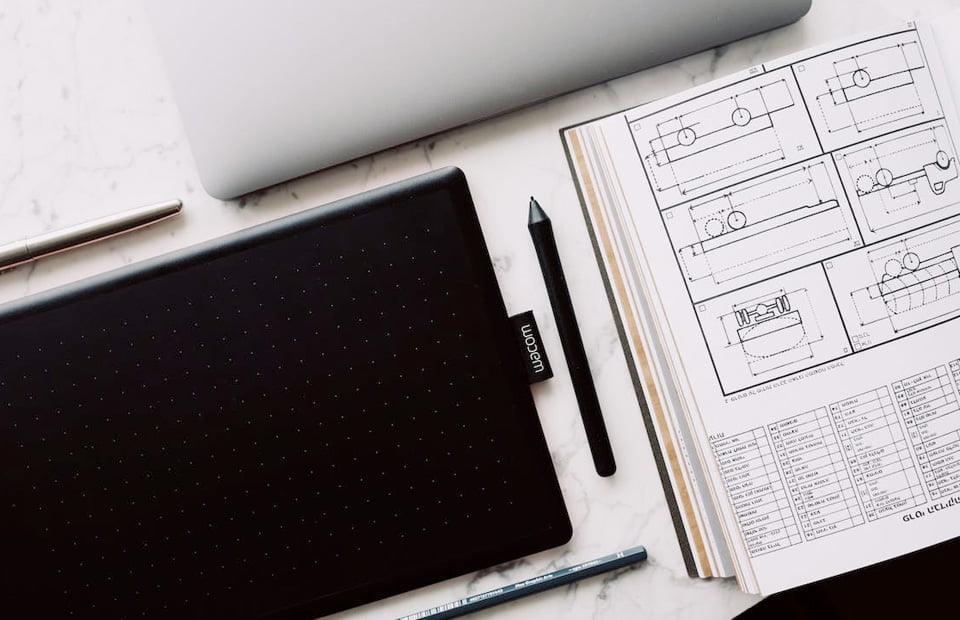In today’s digital world, how well a product works often depends on its user experience (UX) and user interface (UI) structure. UI/UX design is key to making a product look good and easy to use.
A well-designed interface grabs users’ attention, keeps them interested, and encourages them to return. However, even the best designers can make mistakes that affect the user experience.
In this blog post, we’ll look at ten common UI vs UX design mistakes and give you practical tips to avoid them, so you can create designs that are effective and user-friendly.
Understanding UI/UX Design:

UI/UX design isn’t just about aesthetics; it’s about creating a smooth interaction between individuals and digital products. UI focuses on the visual aspects like layout, colors, and typography that people interact with.
UX covers the entire journey a user has with a product, from usability and accessibility to emotional connection. A great UI/UX design brings these elements together, making sure individuals can achieve their goals easily and enjoyably.
By understanding and prioritizing what people need and want, designers can craft intuitive interfaces that are both functional and emotionally satisfying, which in turn increases satisfaction and loyalty.
10 Common UI/UX Design Mistakes and How to Avoid Them

When working on UI vs UX design, it’s important to be aware of common mistakes and how to avoid them. Here are some key things to keep in mind:
1. Neglecting User Research
-
The Mistake
One major mistake is skipping user research. Designers sometimes make assumptions about what people need or want, leading to designs that don’t meet audience expectations.
-
How to Avoid It
Do thorough user research before you start designing. Use surveys, interviews, and usability tests to learn about your target audience. Create user personas to represent different types of users, which will guide your creative choices and ensure your interface meets real people’s needs.
2. Overcomplicating Navigation
-
The Mistake
Complex navigation can frustrate individuals and lead to high bounce rates. Adding too many options or layers in the navigation menus can make it hard for people to find what they’re looking for.
-
How to Avoid It
Keep navigation simple and easy to use. Use clear labels and limit the number of menu items to the essentials. Arrange the navigation in a logical hierarchy so users can easily find subcategories without feeling overwhelmed. Breadcrumbs can also help people understand their location on the site.
3. Ignoring Mobile Responsiveness
-
The Mistake:
With more people using mobile devices, ignoring mobile responsiveness is a big mistake. Designs that look good on a desktop might not work well on smaller screens, leading to a poor user experience.
-
How to Avoid It
Start designing for mobile devices first, then adjust them for larger screens. Use flexible grids and media queries to ensure your layout looks good on all screen sizes. Test your interface on different devices to find and fix any problems.
4. Lack of Consistency
-
The Mistake
Inconsistent visual elements can confuse users and negatively impact their experience. This includes differences in fonts, colors, button styles, and layouts throughout an app.
-
How to Avoid It
Create a style guide or visual framework that details your creative choices, including colors, fonts, and UI components. Make sure everyone on the team follows these guidelines to keep the layout consistent throughout the project. Regularly check your interfaces to fix any inconsistencies.
5. Overloading with Information
-
The Mistake
Showing too much information at once can overwhelm users and make it difficult for them to focus on important tasks. This often happens on dashboards or landing pages where designers try to display all relevant data at the same time.
-
How to Avoid It
Organize information with a clear hierarchy. Highlight the most important content and use whitespace to separate different sections. Break up complex information into smaller chunks, like using tabs or accordions to organize content. Always keep the user’s main goals in mind and streamline the information.
6. Failing to Provide Feedback
-
The Mistake
Users need feedback to know if their actions are successful. Not providing clear feedback can leave people unsure if their actions, like submitting a form or completing a purchase, worked.
-
How to Avoid It
Add visual and auditory feedback to your designs. For example, use loading indicators, success messages, or error notifications to let people know the status of their actions. Make sure feedback is timely and clear so users feel in control and informed.
7. Neglecting Accessibility
-
The Mistake
Accessibility is often overlooked in UI/UX design, which can exclude users with disabilities. Ignoring accessibility can prevent a significant portion of your audience from using your product effectively.
-
How to Avoid It
Follow inclusive design practices and adhere to the Web Content Accessibility Guidelines (WCAG). Ensure good color contrast, provide alternative text for images, and make sure your site can be navigated using a keyboard. Test with real people to find and fix accessibility issues.
8. Using Too Many Fonts and Colors
-
The Mistake
While creativity is important, using too many fonts and colors can make a design look chaotic and unprofessional. This can distract users and weaken your brand identity.
-
How to Avoid It
Stick to a limited color palette and use a maximum of two or three fonts. Choose fonts that are easy to read and work well together. Follow your brand guidelines to maintain a consistent look and feel across your UI, which helps with brand recognition and people’s trust.
9. Ignoring User Testing
-
The Mistake
Skipping user testing can lead to designs that don’t connect with the target audience. Designers might assume their designs are effective without checking them with real users.
-
How to Avoid It
Include user testing throughout the development process. Test with real users to see how they interact with your design. Gather feedback to identify problems and areas for improvement. Use this feedback to refine your design and make it more user-friendly.
10. Not Keeping Up with Trends
-
The Mistake
The digital world is always changing, and not staying updated with the latest UI/UX trends can make your interface feel outdated. Users expect modern, easy-to-use experiences, and falling behind can hurt engagement.
-
How to Avoid It
Stay up-to-date with industry trends by reading blogs, attending webinars, and joining creative communities. Try new techniques and tools to keep your skills fresh, but don’t sacrifice usability or accessibility for trends.
Conclusion
By recognizing and avoiding these common UI vs UX design mistakes, you can greatly improve the user experience of your digital products. Focus on user research, simplify navigation, ensure your layout works well on mobile devices, and keep your visual style consistent.
Also, pay attention to accessibility, provide clear feedback, and stay updated with design trends. A well-thought-out UI/UX design not only meets user needs but also keeps users engaged and loyal, setting the stage for long-term success.
Embrace the ongoing nature of development and always aim to adapt and improve based on audience feedback and evolving trends. Happy designing!




very helpful
really helpful